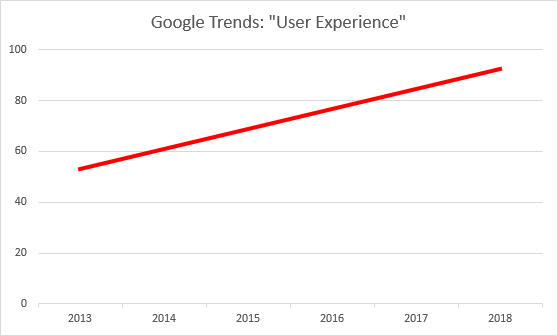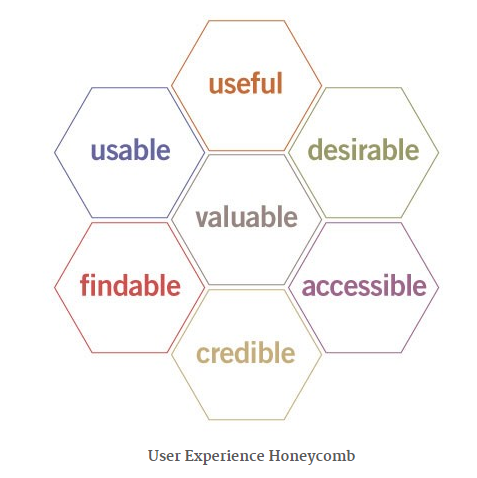If I’ve been fortunate enough to have 10 minutes of your time, you’ve no doubt heard me utter the phrase “user experience” (“UX” for short) at least once. Happy customers are my jam, and customer experience is directly correlated to customer happiness. When we look at concepts like personalisation, customer retention and loyalty, you may notice an underpinning theme: they all lean heavily on user experience. These days, you can study User Experience at university. There are government websites devoted to the topic. Entire career paths have been forged around the UX philosophy.
The world at large is increasingly taking notice. Google Trends says some pretty strong things on the popularity of User Experience as a topic, and it’s only headed in one direction.

Data source: Google Trends
So what does that mean for you and your business?
Well, let’s take a step back and look at all the things vying for your customer’s attention in the digital space at any given moment:
- Snapchat
- Youtube
That’s by no means an exhaustive list (actually it was just a quick swipe through my phone apps), but you can very quickly see that there’s a LOT of potential noise out there.
Add your website into the mix. How does it stack up? Is it intuitive and simple to use? Is it built around solving your customer’s problem as quickly and easily as possible? When you make changes, are they made with your users in mind?
Peter Morville, a bestselling author on the topic of UX, illustrates the facets of User Experience with a sweet little honeycomb diagram:

Geometric goodness aside, it’s a handy tool to assess your own website. Are you prioritising User Experience as much as you could be? If you stop comparing your business to your competitors and start comparing it to the benchmark set by the platforms people are using every day - how do you measure up?
Success depends so much on customer satisfaction. By putting the user first, you’re telling them they’re important to you and your business. That you’ve designed things with them front of mind. A positive user experience translates to a happy customer. Repeated positive experiences are the foundation for customer loyalty. Loyal customers become evangelists, and those evangelists give you the kind of brand recognition you can’t buy.
Customer Self Service – CV’s eCommerce application – gives you the tools to provide best practice experiences to your customers, but it’s only as good as the time you invest in it. We’ve made the platform as configurable as it is because there is no “one size fits all” answer to great UX.
Consider leveraging sources such as Enhanced eCommerce in Google Analytics and the feedback collected by your own staff to find what resonates with your customers. Think about the different personas who utilise your site and what would make their lives easier. Change small, measure the impact and change again.
So what kind of experience are you giving your users, and most importantly, could it be better?

